
The Master of the Tiburtine Sibyl (fl. 1475–1495) was an unidentified Early Netherlandish painter, probably from Haarlem, named after The Tiburtine Sibyl meets Augustus, a work in the Städel in Frankfurt.

The Master of the Tiburtine Sibyl (fl. 1475–1495) was an unidentified Early Netherlandish painter, probably from Haarlem, named after The Tiburtine Sibyl meets Augustus, a work in the Städel in Frankfurt.
The artist was first recognized and named by German art historian Max Jakob Friedländer, who specialized in Early Netherlandish painting. Speculation on which known painter he may be identified with has so far been fruitless. He is supposed to have been trained first in Leuven, probably with Dieric Bouts, [1] and later in Haarlem, with some of his works, like the Tiburtine Sibyl, showing clear influences of Geertgen tot Sint Jans. [2] [3] Some works which were earlier attributed to the Master of the Tiburtine Sibyl are now attributed to unknown followers of Bouts. [4] Art historian Wilhelm Valentiner identified the Master with Albert van Ouwater, but this identification is now rejected. [1]
The Master of the Tiburtine Sibyl influenced some later painters like Gerard David, whose Arrest of Sisamnes shows clear resemblances to The Tiburtine Sibyl meets Augustus. [3] Also some woodcuts by the early book illustrator, the Master of Jacob Bellaert, show clear influences of the Master of the Tiburtine Sibyl, with some authors even suggesting that they were the same artist. [1] [5]

Gerard David was an Early Netherlandish painter and manuscript illuminator known for his brilliant use of color. Only a bare outline of his life survives, although some facts are known. He may have been the Meester gheraet van brugghe who became a master of the Antwerp guild in 1515. He was very successful in his lifetime and probably ran two workshops, in Antwerp and Bruges. Like many painters of his period, his reputation diminished in the 17th century until he was rediscovered in the 19th century.
Hans Memling was a painter active in Flanders, who worked in the tradition of Early Netherlandish painting. Born in the Middle Rhine region, he probably spent his childhood in Mainz. During his apprenticeship as a painter he moved to the Netherlands and spent time in the Brussels workshop of Rogier van der Weyden. In 1465 he was made a citizen of Bruges, where he became one of the leading artists and the master of a large workshop. A tax document from 1480 lists him among the wealthiest citizens. Memling's religious works often incorporated donor portraits of the clergymen, aristocrats, and burghers who were his patrons. These portraits built upon the styles which Memling learned in his youth.

Filippino Lippi was an Italian painter working in Florence, Italy during the later years of the Early Renaissance and first few years of the High Renaissance.

Antonello da Messina, properly Antonello di Giovanni di Antonio, but also called Antonello degli Antoni and Anglicized as Anthony of Messina, was an Italian painter from Messina, active during the Italian Early Renaissance.

Maarten van Heemskerck or Marten Jacobsz Heemskerk van Veen was a Dutch portrait and religious painter, who spent most of his career in Haarlem. He was a pupil of Jan van Scorel, and adopted his teacher's Italian-influenced style. He spent the years 1532–36 in Italy. He produced many designs for engravers, and is especially known for his depictions of the Wonders of the World.

Pinturicchio, or Pintoricchio, also known as Benetto di Biagio or Sordicchio, was an Italian painter during the Renaissance. He acquired his nickname because of his small stature and he used it to sign some of his artworks that were created during the fifteenth and sixteenth centuries.
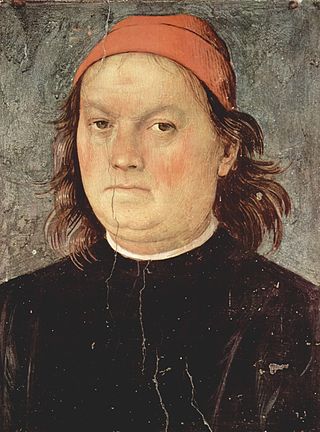
Pietro Perugino, born Pietro Vannucci, was an Italian Renaissance painter of the Umbrian school, who developed some of the qualities that found classic expression in the High Renaissance. Raphael was his most famous pupil.
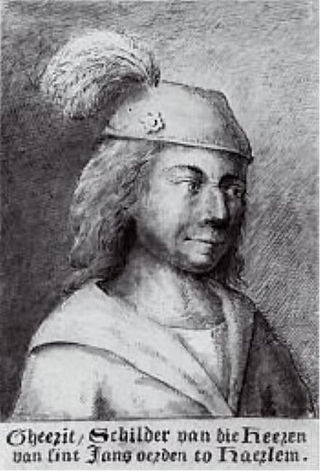
Geertgen tot Sint Jans, also known as Geertgen van Haarlem, Gerrit van Haarlem, Gerrit Gerritsz, Gheertgen, Geerrit, Gheerrit, or any other diminutive form of Gerald, was an Early Netherlandish painter from the northern Low Countries in the Holy Roman Empire. No contemporary documentation of his life has been traced, and the earliest published account of his life and work is from 1604, in Karel van Mander's Schilder-boeck.

Dieric Bouts was an Early Netherlandish painter. Bouts may have studied under Rogier van der Weyden, and his work was influenced by van der Weyden and Jan van Eyck. He worked in Leuven from 1457 until his death in 1475.
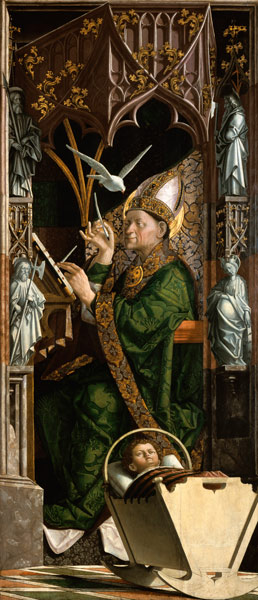
Michael Pacher was a painter and sculptor from Tyrol active during the second half of the fifteenth century. He was one of the earliest artists to introduce the principles of Renaissance painting into Germany. Pacher was a comprehensive artist with a broad range of sculpting, painting, and architecture skills producing works of complex wood and stone. He painted structures for altarpieces on a scale unparalleled in North European art.

Albert van Ouwater was one of the earliest artists of Early Netherlandish painting working in the Northern Netherlands, as opposed to Flanders in the South of the region.

Joos van Cleve was a leading painter active in Antwerp from his arrival there around 1511 until his death in 1540 or 1541. Within Dutch and Flemish Renaissance painting, he combines the traditional techniques of Early Netherlandish painting with influences of more contemporary Renaissance painting styles.
The decade of the 1480s in art involved some significant events.
The decade of the 1410s in art involved some significant events.
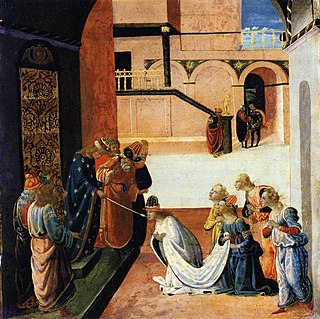
Jacopo del Sellaio (1441/42–1493), was an Italian painter of the early Renaissance, active in his native Florence. His real name was Jacopo di Arcangelo. He worked in an eclectic style based on those of Botticelli, Filippino Lippi, and Domenico Ghirlandaio. The nickname Sellaio derives from the profession of his father, a saddle maker.

The Master of the Saint Bartholomew Altarpiece was an Early Netherlandish painter active in Germany, mostly Cologne, between 1475/1480 and 1510. Despite his anonymity, he is one of the most recognizable artists of the early Renaissance period in German art.
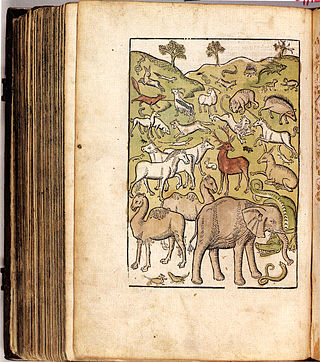
Jacob Bellaert was an early Dutch publisher who produced seventeen books in Haarlem from 1483 to 1486. The early Netherlandish painter Master of Bellaert or Master of Jacob Bellaert is so called for his many woodcuts in Bellaert's publications.
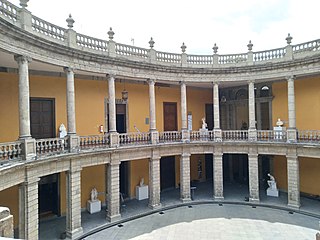
The Museo Nacional de San Carlos is a Mexican national art museum devoted to European art, located in the Cuauhtémoc borough in Mexico City. The museum is housed in the Palace of the Count of Buenavista, a neoclassical building at Puente de Alvarado No. 50, Colonia Tabacalera, Mexico City. It contains works by Lucas Cranach the Elder, Parmigianino, Frans Hals, Anthony van Dyck, Jean-Auguste-Dominique Ingres, Auguste Rodin and other well-known European painters and sculptors.
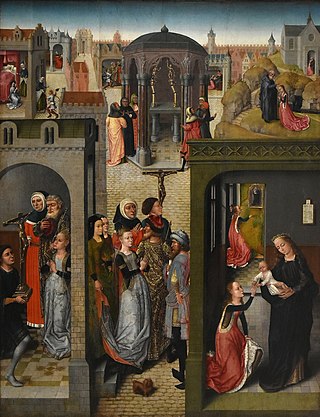
The Master of the Legend of Saint Catherine is the notname for an unknown late 15th century Early Netherlandish painter. He was named after a painting with Scenes from the Legend of Saint Catherine, now kept in the Royal Museums of Fine Arts of Belgium. He was active between c. 1470 and c. 1500, probably around Brussels.